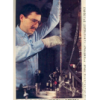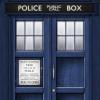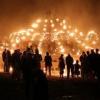
trying to understand F Stop
Started by
camvan
, Jan 25 2006 06:29 PM
8 replies to this topic
#1

Posted 25 January 2006 - 06:29 PM
I'm confused about what influences F Stop on a telescope. You see SCT's @ F15 and Newtonian's with F4, similar focal lengths and whatnot. how is the F Stop determined? can you influence or change the F Stop of a scope with anything (eg - adapters, focal lengtheners/shorteners) and if so, how do they manage that?  I am sort of interested in the Meade SN scopes, I see the 6" has a higher F Stop than the 8" or the 10"...and I believe the F Stop on our little ETX-60-AT is bigger than our 8" Dobsonian (might be wrong, but that's what niggles in my memory). Any help with understanding how that works would be appreciated!
I am sort of interested in the Meade SN scopes, I see the 6" has a higher F Stop than the 8" or the 10"...and I believe the F Stop on our little ETX-60-AT is bigger than our 8" Dobsonian (might be wrong, but that's what niggles in my memory). Any help with understanding how that works would be appreciated! 
#2

Posted 25 January 2006 - 06:35 PM
Better answers below...
#3

Posted 25 January 2006 - 06:49 PM
The easiest explanation is with a straight through design:
A refractor with an objective lens of 100mm diameter and a focal Length of 1000mm will have a focal Ratio of f/10. An object lens of 100mm with a focal length of 600mm will have a focal ratio of f/6.
Focal ratio is calculated by the diameter of the object glass (either lens or mirror) and the focal length of the object glass, so 1000mm (focal length) divided by 100mm (diameter of objective) = 10 (f/10).
In a Newtonian reflector, it is the light path reflected to the secondary (from the main mirror) then to the focus at the eyepiece.
So a 100mm refractor with a focal length of 1000mm is an f/10, a 200mm Newtonian with the same focal length would be f/5.
Cassegrain (including SCTs and Maks) and Gregorian designs gather light at the main mirror, reflect back up the tube to the secondary, then all the way back down the tube to the eyepiece which accounts for the long focal lengths (and focal ratios) in a relatively short tube.
I hope that makes some sense?
A refractor with an objective lens of 100mm diameter and a focal Length of 1000mm will have a focal Ratio of f/10. An object lens of 100mm with a focal length of 600mm will have a focal ratio of f/6.
Focal ratio is calculated by the diameter of the object glass (either lens or mirror) and the focal length of the object glass, so 1000mm (focal length) divided by 100mm (diameter of objective) = 10 (f/10).
In a Newtonian reflector, it is the light path reflected to the secondary (from the main mirror) then to the focus at the eyepiece.
So a 100mm refractor with a focal length of 1000mm is an f/10, a 200mm Newtonian with the same focal length would be f/5.
Cassegrain (including SCTs and Maks) and Gregorian designs gather light at the main mirror, reflect back up the tube to the secondary, then all the way back down the tube to the eyepiece which accounts for the long focal lengths (and focal ratios) in a relatively short tube.
I hope that makes some sense?
#4

Posted 25 January 2006 - 06:50 PM
F-numbers are the same on a telescope as a camera. The camera can change the f-stop/f-number/focal ratio (whatever you want to call it), but there is no difference.
What it means when used viually is the relative brightness of an image with a specific eyepiece. Divide the eyepiece focal length by the scope's f-number will give you the size of the exit pupil. The exit pupil is related to the relative brightness of the image.
The f-stop is simply the ratio between the aperture (entrance pupil) an focal length. Anything that changes the relative focal length like a barlow or reducer changes the effective f-stop.
Don't make a common mistake with confusing the field of view with the f-stop. Field of view is related to the focal length. In astronomy the common "wisdom" is to link the f-stop to the field of view, but that only works when you are comparing telescopes of equal aperture (remember the f-stop is the ratio between aperture and focal length).
What it means when used viually is the relative brightness of an image with a specific eyepiece. Divide the eyepiece focal length by the scope's f-number will give you the size of the exit pupil. The exit pupil is related to the relative brightness of the image.
The f-stop is simply the ratio between the aperture (entrance pupil) an focal length. Anything that changes the relative focal length like a barlow or reducer changes the effective f-stop.
Don't make a common mistake with confusing the field of view with the f-stop. Field of view is related to the focal length. In astronomy the common "wisdom" is to link the f-stop to the field of view, but that only works when you are comparing telescopes of equal aperture (remember the f-stop is the ratio between aperture and focal length).
#5

Posted 25 January 2006 - 07:20 PM
If you look at f-stops on a camera lens, you'll notice they go something like this: f/ 2, 2.8, 4, 5.6, 8, and so forth. Because the amount of light varies with the square of the diameter, f/2 has twice the area (not diameter) of lens opening (with respect to the focal length) as 2.8, which is twice f/4, and so on.
Camera f-stops are marked so that each step, depending on the direction, admits twice or half as much light as the adjacent stop.
Camera f-stops are marked so that each step, depending on the direction, admits twice or half as much light as the adjacent stop.
#6

Posted 25 January 2006 - 08:19 PM
Will and Rusty...You just took the entire mystery of the F ratios and how they relate to imaging away for me. Thank you 
#7

Posted 26 January 2006 - 04:49 AM
Great answers above. I will just add a bit more to the camera's part.
In a nutshell, the phrase "F-Stop" is used only in photography, and applies to the lens. In astronomy we use "F-Ratio" or just "f".
A camera lens comes with specific f/ratio just as a telescope. It is the lowest setting on the camera's aperture's dial. The other (higher) numbers are simply caused by you closing (or "stopping") the lens down. It restricts the exit diameter, for two intended purposes.
1.) To reduce the amount of light coming into the camera
2.) To increase the depth of field in the shot. The higher the f/stop, the more depth of field you will have (more area is is focus at the same time).
Hope this helps.
CF
In a nutshell, the phrase "F-Stop" is used only in photography, and applies to the lens. In astronomy we use "F-Ratio" or just "f".
A camera lens comes with specific f/ratio just as a telescope. It is the lowest setting on the camera's aperture's dial. The other (higher) numbers are simply caused by you closing (or "stopping") the lens down. It restricts the exit diameter, for two intended purposes.
1.) To reduce the amount of light coming into the camera
2.) To increase the depth of field in the shot. The higher the f/stop, the more depth of field you will have (more area is is focus at the same time).
Hope this helps.
CF
#8

Posted 26 January 2006 - 06:35 AM
Just a little note. In photography the f-number is written "f/2.8." The "f" is the symbol for focal length. The slash indicates "divided by." So, f/2.8 is the focal length divided by 2.8. Simply calculate that to get the aperture (entrance pupil).
Just to make everything more confusing. The word "aperture" in photography refers to an f-stop. In astronomy, it refers to the entrance pupil.
Just to make everything more confusing. The word "aperture" in photography refers to an f-stop. In astronomy, it refers to the entrance pupil.
#9

Posted 26 January 2006 - 10:39 AM
Cameron,
I'm not sure if the answers you've received clarify or muddy the waters. Basically, the more curvature you add to a lens or mirror, the more you bend the light (the sharper you make the light cone), and the shorter the focal length becomes. For scopes of the same aperture, more curvature equals shorter focal lengths and therefore lower focal ratios.
Shorter focal lengths and lower focal ratios mean you'll have a wider field of view, will likely see more stars, and will have a shorter telescope or lens (relatively). Longer focal lengths and higher focal ratios mean you'll get more magnification, have a narrower field of view, and will have a longer telescope or lens.
So you can affect your f-stops or focal ratios by straightening your light cone (adding a Barlow lens), shortening your light cone (adding a focal reducer), or stopping down your aperture (adding an aperture mask).
The Meade SNs have a tremendous focal ratio advantage for astrophotography, roughly three full f-stops. That means you'll have to expose for 8 hours with an f/11 scope to equal what an f/4 scope will capture in one hour.
I'm not sure if the answers you've received clarify or muddy the waters. Basically, the more curvature you add to a lens or mirror, the more you bend the light (the sharper you make the light cone), and the shorter the focal length becomes. For scopes of the same aperture, more curvature equals shorter focal lengths and therefore lower focal ratios.
Shorter focal lengths and lower focal ratios mean you'll have a wider field of view, will likely see more stars, and will have a shorter telescope or lens (relatively). Longer focal lengths and higher focal ratios mean you'll get more magnification, have a narrower field of view, and will have a longer telescope or lens.
So you can affect your f-stops or focal ratios by straightening your light cone (adding a Barlow lens), shortening your light cone (adding a focal reducer), or stopping down your aperture (adding an aperture mask).
The Meade SNs have a tremendous focal ratio advantage for astrophotography, roughly three full f-stops. That means you'll have to expose for 8 hours with an f/11 scope to equal what an f/4 scope will capture in one hour.

























